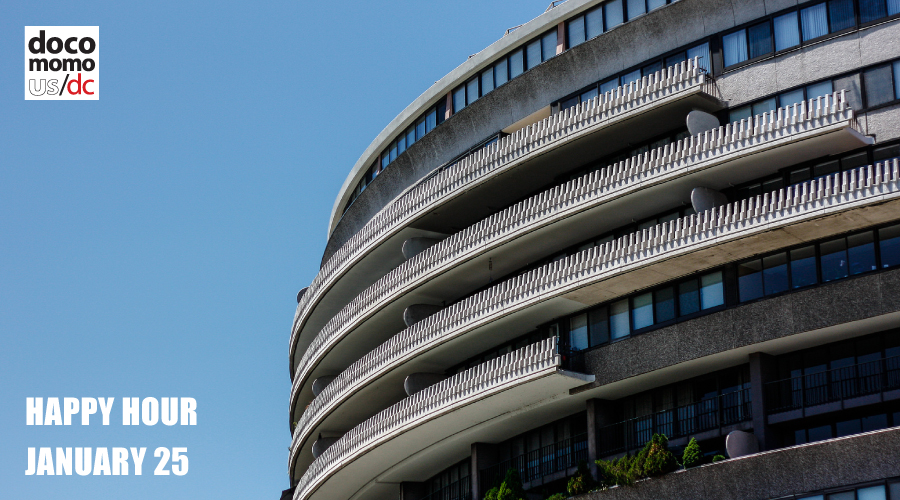
Meet up with your fellow modern enthusiasts at one of DC’s most celebrated mid-century buildings.
Please join us for the Mod Mixer Happy Hour at The Watergate Hotel’s Next Whisky Bar Thursday, January 25th at 6:00pm.
Via Docomomo-DC.org

Celebrating Brutalism in Washington, D.C.

Meet up with your fellow modern enthusiasts at one of DC’s most celebrated mid-century buildings.
Please join us for the Mod Mixer Happy Hour at The Watergate Hotel’s Next Whisky Bar Thursday, January 25th at 6:00pm.
Via Docomomo-DC.org
Following on the success of the Docomomo DC Tour Day, Rediscovering Brutalism, founder Deane Madsen has been asked to deliver a lecture on Brutalism for the National Capital Planning Commission (NCPC). Teaming up with Docomomo DC president Tom Jester, Madsen will have the opportunity to educate NCPC staff on the importance of Brutalism, highlighting successful examples of renovations and restorations while also pointing to buildings that have been lost, such as the Third Church of Christ, Scientist, and the API Building in Reston, Va.
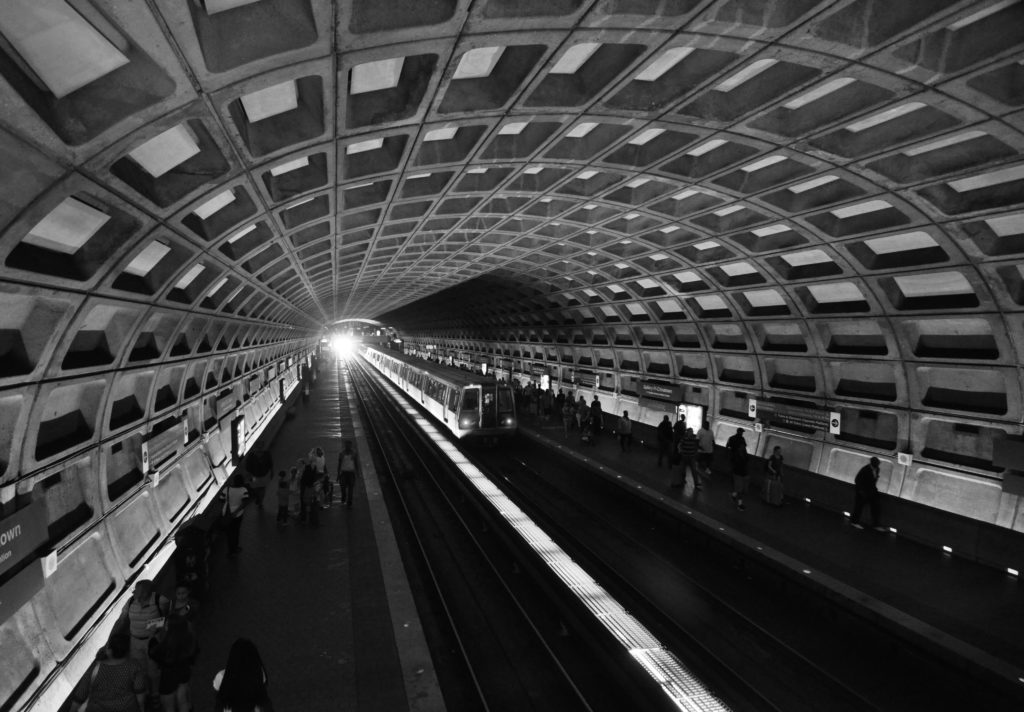
In a recent post on Curbed, architecture critic Alexandra Lange dove into the history of the Washington, D.C. Metro (a.k.a. WMATA), finding that its designers envisioned a forward-looking transit system with longstanding appeal. Metro architect Harry Weese and his firm traveled the world studying existing transportation examples, noting details down to the fabric selection of ticket collectors’ uniforms, before returning stateside to design what has become one of D.C.’s most recognizable landmarks. The D.C. Metro system has been celebrated since its 1976 opening for its column-free, Brutalist vaults of concrete, and was the recipient of the AIA 25-Year Award for Architecture in 2014. This spring, D.C. Metro became the focus of controversy discussed elsewhere and on these pages for (in addition to longstanding issues of management, safety, and scheduling) an ill-advised whitewashing of the vaults at its Union Station stop.
Here’s Lisbon. There’s nothing like a drawing for flavor. pic.twitter.com/ECxY419dLp
— Alexandra Lange (@LangeAlexandra) July 5, 2017
One resource Lange studied was a self-published book with a cumbersome title–”For the Glory of Washington: A Chronicle of Events Leading to the Creation of the System-Wide Architectural Concept for the Design of the Washington Metro Stations, December 1965 – November 1967″–by Stanley Allen, who was chairman of Harry Weese Associates at the time. This book chronicles the firm’s deep involvement in the systemwide design of the D.C. Metro system. Lange sifts through accounts of a worldwide subway tour to preliminary sketches to CFA hearings, and links her findings to current stances on infrastructural maintenance across the country:
To honor the people who clean, upgrade, and augment, we have to see transit design as Weese did: distributed across the city, both as a network of connected stations, platforms, and trains, and as a network of connected tasks. Weese and his team identified the problem, but needed the sometimes harsh design critiques of the Commission of Fine Arts (CFA), “the only federal commission dedicated to design review and aesthetic excellence,” as it says on its website, to create a solution that spoke to place, operations and maintenance.
Maintenance has long plagued the D.C. Metro system. In response to outcry from the architectural community and preservationists over the Union Station paint job, some Metro riders voiced approval for the painting, citing the need for brighter conditions. But underground white paint can only reflect the light that shines on it, besides which, it is a temporary solution–a $100,000 bandage that will need to be re-applied continuously–when upgrades to William Lam’s lighting design, if budget allowed them, would provide a more permanent fix. Again, Lange:
If WMATA had consulted with the CFA or historians, they might have learned that the concrete, if cleaned, with the lighting maintained as Lam intended, would solve the very brightness problems the paint (three coats, easily soiled) provided a short-term solution for. … The paint offers a momentary ‘Ah!’ but the money would be better spent on soap and replacing the lightbulbs with new LEDs—work less likely to be noticed because it’s maintenance.
The purists among supporters of Brutalism note that the style’s moniker stems from béton brut–or, raw concrete–meaning that the paint not only issues a long-term repainting sentence that WMATA seems incapable of serving, but also detracts from the architectural and stylistic integrity of the D.C. Metro.
Former Washington Post architecture critic Benjamin Forgey raised a similar outcry in 1992 over the repainting of the Farragut North Metro station, comparing the D.C. Metro’s 600-foot-long, public great halls to classical architecture:
Like much of the city’s above-ground architecture–the barrel vaults in, say, John Russel Pope’s National Gallery West Building or Daniel Burnham’s Union Station–it is based upon classical precedents. But in its forthright expression of structure in those bold concrete vaults, it’s also modern–a shadowy, richly textured space of our own time. There’s no mistaking that the color and texture of the concrete contribute greatly to the architectural effect.
Perhaps Forgey gets to the point quicker: Paint applied to the vaults flattens out the texture for which the D.C. Metro stations and other Brutalist buildings are celebrated, and you don’t solve problems (of lighting, concrete deterioration, or any others) by painting over them.
Hofstra University’s Axinn Library, designed by Warner, Burns, Toan & Lunde, turns 50 this year. Hofstra will commemorate the occasion with a symposium on Brutalism, to be held November 1, 2017.
“The Axinn Library building, along with its revolutionary partner, the Unispan, unites the campus as a hub for the academic experience,” said Sarah McCleskey, Head of Resource and Collection Services, in a release from Hofstra University. “The towers of North Campus are connected physically and symbolically with the academic buildings of South Campus. The library stands in the center, an imposing concrete structure designed to house information and foster learning.”
The symposium will be free and open to the public, but advance registration is required. The full schedule for the symposium is below:
9:45-10 a.m. Welcome and introductions with Neil H. Donahue, Ph.D., vice provost for undergraduate academic affairs; and Howard Graves, director of library and information services.
10-10:15 a.m. Historical background on The Axinn Library, led by Geri Solomon, assistant dean for special collections.
10:15-10:45 a.m. A look back with Professor Herb Deutsch, who will reminisce on time when the library was being built.
11 a.m.-12:30 p.m. Keynote address by London-based art director and graphic designer, Peter Chadwick, who will also serve as scholar-in-residence throughout the day and teach a Master Class in the music business program. Chadwick worked at Creation Records, where he designed for chart-topping bands including Primal Scream and Spiritualized. After setting up his own studio in 1996, he masterminded campaigns for major artists including Groove Armada, Fatboy Slim, Cream and Hed Kandi. Chadwick runs the popular This Brutal House twitter account and is a champion of Brutalist architecture. His recent book This Brutal World (Phaidon, 2016) has been described as “a beautifully curated visual manifesto” for Brutalism.
1:30-2:30 p.m. Yankee Brutalism with Architectural Historian Brian Sirman, whose scholarship centers on the intersection of twentieth-century architecture and politics.
2:45-4:15 p.m. Panel with Alexandra Lange, architecture critic for Curbed; Peter Bentel, a partner in the studio of Bentel & Bentel, Architects/Planners AIA and a licensed architect; and Mark Pasnik, a founding principal of over,under, an internationally-recognized architecture and design practice. This panel will be moderated by Daniel Rubey, professor of library services at Hofstra.
https://news.hofstra.edu/2017/10/11/axinn-library-celebrates-50/
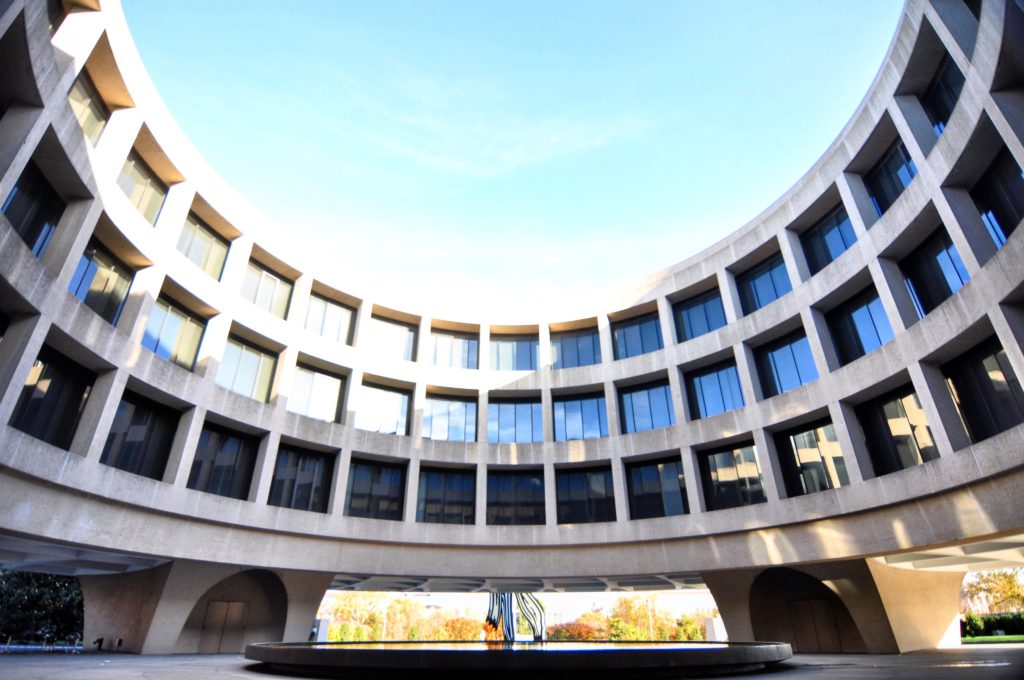
On the evening of October 2, The Hirshhorn, IGDC, and BrutalistDC will co-host a World Architecture Day sunset tour of the Hirshhorn Museum and Sculpture Garden. The Hirshhorn, which was designed by Gordon Bunshaft of Skidmore, Owings & Merrill, and opened in 1974, is a prime example of Brutalist architecture in Washington, D.C., sited at the midpoint between the Capitol and the Washington Monument along the National Mall. Its sunken sculpture garden offers a quiet, shaded refuge from the expansive lawn of the Mall, and the museum was envisioned by Bunshaft to be “a sculpture on the mall.”
From the Going Out Guide listing:
The Smithsonian’s lone brutalist building has affectionately (or derisively) been referred to as a “brutalist doughnut.” The museum will celebrate its round, empty-in-the-middle design on World Architecture Day with free Sugar Shack doughnuts for all visitors, in addition to architecture-focused talks and tours. Highlights include Amanda Kolson Hurley, author of a Washington Post Magazine article on preserving — and improving — brutalist architecture, discussing her story at 12:30 p.m., and @brutalistdc founder Deane Madsen leading an Instagram tour of the building at 6:15 p.m. 10 a.m. to 7 p.m. Free.
We hope to see you there!
Read the full Going Out Guide list of upcoming events at The Washington Post.
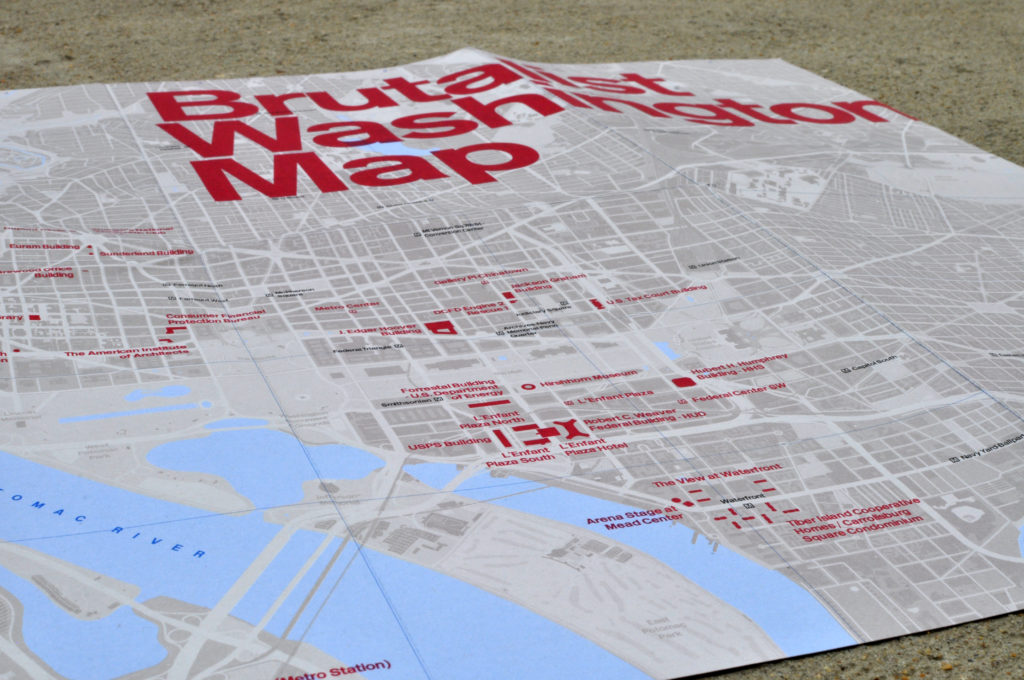
BrutalistDC will take over the Instagram feed of the Southwest Business Improvement District (@SWBID) on Thursday, October 5. Expect a walking tour starting from the Waterfront Metro and ending at the U.S. Department of Energy.
We plan on covering a lot of ground, and hope to make it to the following buildings, most of which are on the Brutalist Washington Map:
Be sure to follow @SWBID and @BrutalistDC on Instragram to join in.
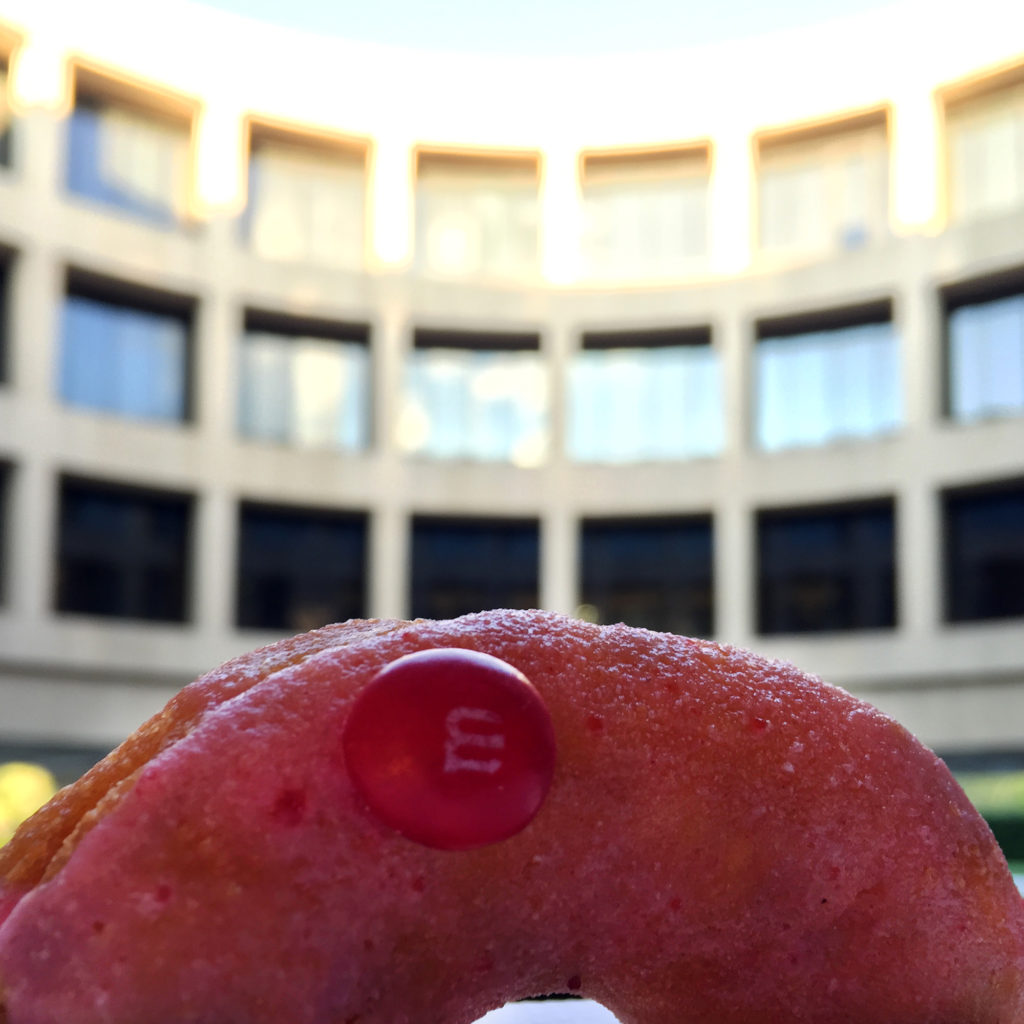
The Hirshhorn Museum and Sculpture Garden is once again pulling out all the stops to host a full day of Brutalist programming (and doughnuts!) on World Architecture Day, which falls this year on October 2. Following on the success of last year’s collaboration with WalkWithLocals, BrutalistDC has been invited back for another evening walking tour of the Hirshhorn grounds, starting at 6.15pm.
Here’s the Hirshhorn’s full schedule of #WorldArchitectureDay events:
For kids
10 a.m.: For a special edition of STORYTIME, the museum’s youngest visitors are invited to explore architecture through a read-aloud of Iggy Peck Architect by Andrea Beaty and a hands-on building activity.
For all ages
12:30 p.m.: Architecture specialist Amanda Hurley talks Brutalism and color, expanding on her Washington Post Magazine article arguing in favor of preserving brutalist architecture in Washington.
1–1:10 p.m.: Visitors can witness the motorized magic of “The Project for the Preservation of Natural Resources” as the miniature model—complete with working windmills and running water—comes to life in the exhibition “Ilya and Emilia Kabakov: The Utopian Projects.”
2 p.m.: A Gallery Guide-led tour will explore architecture-inspired art on view, including the fantastical world of Ilya and Emilia Kabakov’s models in “The Utopian Projects.”
4 p.m.: Kelsey Keith, editor-in-chief of Curbed, debates the good, bad, beautiful and ugly of Brutalism, and the Hirshhorn’s groundbreaking design in architecture history.
6:15 p.m.: Deane Madsen (@deane_madsen), former design editor of Architect magazine, will lead an IGDC (@igdc) brutalist Instameet tour #atHirshhorn. Founder of the Instagram account @brutalistdc, Madsen will explore the exterior and lush garden at sunset.
From the Hirshhorn:
Known best for the art displayed within its walls, the Hirshhorn will devote the day to spotlighting its sculptural Gordon Bunshaft-designed building, which opened to the public in 1974. Standing out among the classical buildings of the National Mall, the Hirshhorn—affectionately nicknamed the “Brutalist donut”—is one of the most popular examples of the Brutalist architectural style, which erupted from the 1950s through the 1970s.
For the second year in a row, visitors of all ages can drop by the museum to enjoy complimentary donuts, while supplies last, and partake in a wide-ranging schedule of architecture-themed activities led by Washington-based experts. Architecture, photography and art enthusiasts alike will be drawn in by local Instagram community IGDC to join in appreciating the monumental stature of this much-debated architectural style.
More information is available via The Hirshhorn.
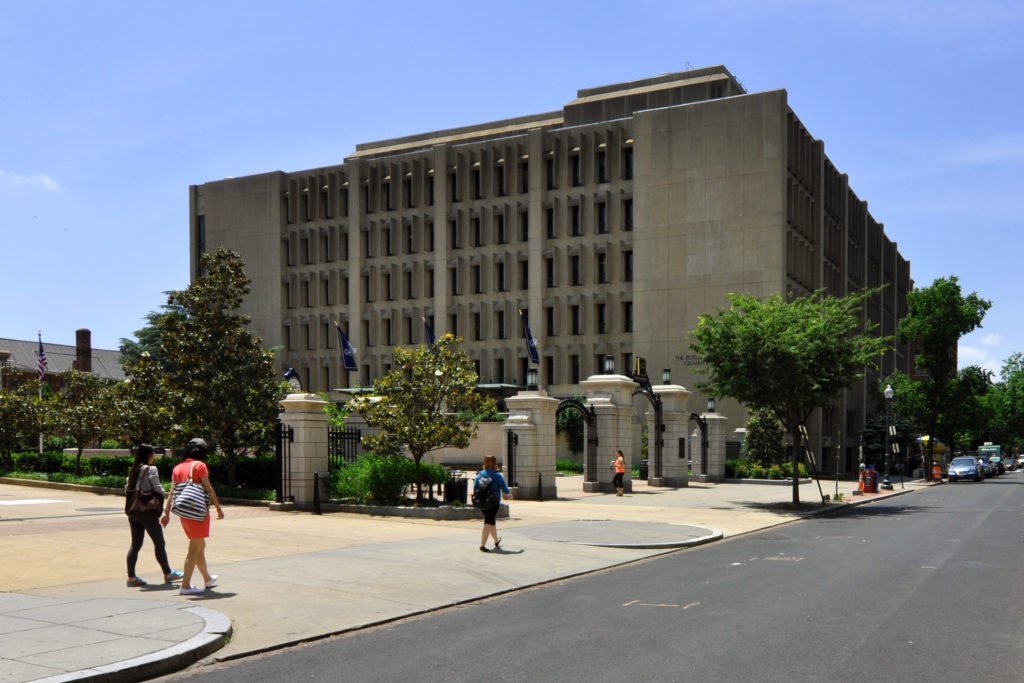
Join BrutalistDC founder Deane Madsen for a public lecture at the George Washington University Museum on Monday, Oct. 2 at noon. As part of the Mondays at the Museum series, this lecture will discuss the rise of Brutalist architecture in Washington, D.C. and its many examples of the architectural style. Whether you like or loathe it (or don’t know what it is), you have likely seen it around the city.
WHEN: Monday, Oct. 2, 12pm-1pm
WHERE: The George Washington University Museum,
701 21st Street, NW, Washington, DC 20052
More information is available via the GWU Museum.

DocomomoDC announced today that it will feature Washington, D.C.’s Brutalist architecture in a walking tour to be held on Saturday, Oct. 7, 2017. The tour, called “Rediscovering Brutalism,” will begin at the AIA National Headquarters (which was designed by The Architects Collaborative) with a lecture by Michael Kubo, followed by a walking/Metro-riding tour to Dupont Circle. Kubo is co-author of both Heroic: Concrete Architecture and the New Boston and the Brutalist Boston Map.
Details for the tour, courtesy of DocomomoDC, are below:
Saturday, Oct. 7, 2017, 1pm to 5pm, rain or shine
Downtown Washington, D.C.
Lecture followed by Walking + Metro Tour with happy hour.
Registration for the tour is through Eventbrite. Tickets cost $35. Students and members of Docomomo, the DC Preservation League, and APT DC receive a discounted admission of $25. Those in attendance will each receive one keepsake copy of the Brutalist Washington Map.

Defining Brutalism can be a challenge. As a style that spans multiple decades and sprang from multiple continents simultaneously, its definition arises primarily out of post-application by architectural critics (we’ve developed our own working definition of Brutalism). Thankfully, the good folks at Curbed have put together a handy video explainer on Brutalism as part of Curbed’s “Hands On” series, linked below for your perusal.
The video lists off a few prominent examples of Brutalism, including Boston City Hall, Moshe Safdie’s Habitat ’67 in Montreal, Louis Kahn’s Dhaka National Assembly in Bangladesh, and Le Corbusier’s Unité d’Habitation complexes (Washington, D.C.’s J. Edgar Hoover FBI Building earns a cameo!).
Do you love or hate Brutalism? Our new explainer series, “Hands On,” breaks it down. pic.twitter.com/7SFAcD36fe
— Curbed (@Curbed) August 2, 2017
Curbed lists the tenets of Brutalism as
Credit Curbed for producing a brief and digestible explainer on the style: At just over three minutes, it’s long enough to include multiple perspectives about Brutalism, e.g., that it has become a stand-in architectural style for dystopian futures, and that it’s celebrated for its honesty of materiality; and short enough that it’s easy to share with Brutalism neophytes.
Read Brutalist DC’s definition of Brutalism.